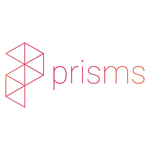
Ohio Leads Nation in VR Education
Prisms’ VR math application used by over 50 districts and over 15,000 students in Ohio to help students love and succeed in math
COLUMBUS, Ohio–(BUSINESS WIRE)–Prisms VR, a learning platform pioneering a new paradigm for math education, today celebrated Ohio’s leadership in virtual reality (VR) education, at its first Prisms of Reality Conference in Marysville, Ohio. Leading the nation in scaling experiential learning, Ohio launched Prisms’ VR new world math learning design in fall 2021 to over 50+ school districts + 15,000 students; it’s the first state to drive VR adoption to help raise math engagement and scores for all its students.
Learning math through relevant problems, experienced in the first person, is the best way for students to understand the “why” and utility of math education, a question left unanswered for many students. Built for 8th to 11th grade math students, tutors and teachers, Prisms VR provides standards-aligned VR content and multiplayer collaborative learning environments that target bottleneck topics in secondary math. In 2021, Ohio schools introduced Prisms VR technology into math classrooms, empowering students to engage with complex math concepts at the root of failure, in an immersive and interactive way. The application creates virtual environments that simulate real-life scenarios, allowing students to connect to compelling problems through physical situations before abstracting up to symbolic notations, conventions and procedures.
The home of the first large-scale efficacy studies of the impact of VR on math learning outcomes, early studies across the state have shown double-digit growth outcomes on standards-aligned proficiencies, deeper conceptual understanding and confidence. The use of VR technology has also increased student motivation and purpose in math, making it a stimulating and rewarding subject to learn. “This is the first time that I’ve ever enjoyed going to math class,” one student said.
“We are hearing students who’ve taken two years of Algebra say that they understand exponential functions for the first time, because they could clearly ‘see where they came from’ and could apply them to problems they care about,” said Anurupa Ganguly, founder and chief executive officer at Prisms. “VR finally allows us to scale how we’ve always wanted to teach — using problems that mean something, plus movement and tactile visualizations that elucidate structure and great stories. It’s not a new technology fad; it’s the best shot we have at scaling humane teaching practices that don’t treat students as computer algorithms, but rather as rich sense-making beings. Using VR, we can take our students beyond the classroom walls and transport them to places and situations that are difficult, if not impossible, to replicate otherwise. Using this approach can engage and inspire learners, and it’s my mission to make learning more accessible and scalable than it ever has before.”
Superintendent of Montgomery County ESC, Shannon Cox said, “The immersion of students in virtual reality-enhanced lessons in schools or at home allows for the application of real-world learning to finally answer the question, ‘When will I ever use this?’. With Prisms VR, students connect their physical understanding to 3D simulations outside of their body. This new learning model, where students and children are active agents solving problems in the real world, is making our students love learning and helping teachers love teaching again.”
In an eSchool news article, educators expressed their engagement and augmentation of the content in which they are tasked to teach. “I have gained a deeper understanding of the authentic learning application of what I am teaching. I have been teaching this content for years and have now experienced the content in a more concrete, understandable way. I have an actual real response when students are asking why they need to learn what it is that I am teaching.” (Anonymous Teacher)
“Math is so fun now! It’s like going on a field trip without leaving the classroom. I love how it lets me experience things that I would never be able to see in real life. It makes learning so much more fun and interactive. I feel like I understand the material better when I can see it in 3D and interact with it. It’s definitely my favorite part of school now!” (Anonymous Student)
To learn more about how Prisms is changing the way students learn math, click here.
About Prisms
Prisms, founded in 2020, is pioneering efficacious learning experiences in virtual reality. Backed by the National Science Foundation and the National Institutes of Health, Prisms is the first spatial learning platform for K-12 STEM education, scaling a new way of learning core math and science that actualizes pedagogies that we know work best. In 2023, Prisms launched its VR math modules for consumers via the Meta Quest Store bringing joyful and spatial math learning to anyone: Students, teachers, tutors, and parents. To bring Prisms to math classrooms in your local school district, visit www.prismsvr.com.
Contacts
James Conway
104 West Partners
James.Conway@104west.com
